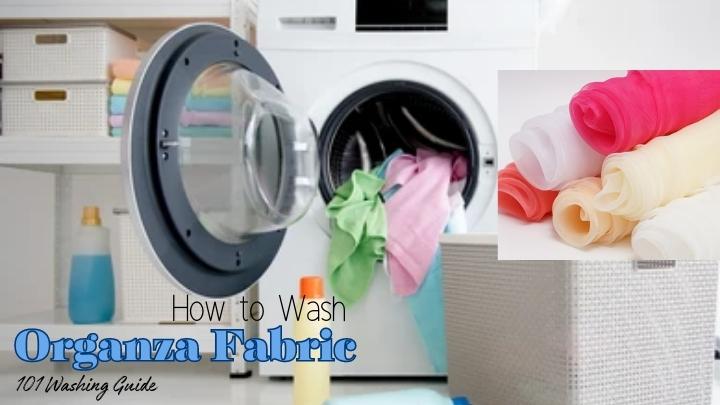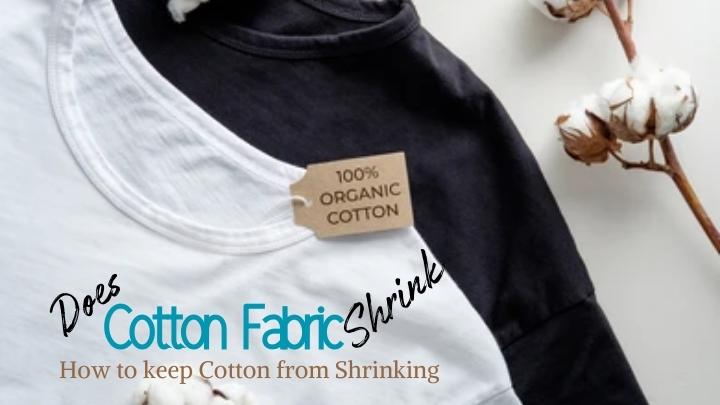Organza is a delicate and versatile fabric that has found its place in the world of fashion and home decor. Renowned for its lightweight nature and slightly shiny appearance, organza adds an elegant touch to various garments and decorative items. Whether it's a stunning wedding dress, an exquisite evening gown, or even curtains and tablecloths, organza can create a captivating and ethereal aesthetic.
What is Organza Fabric?
Historically, organza was primarily made from silk fibers. Silk organza was cherished for its luxurious feel and high-quality finish. However, as technology advanced, synthetic fibers like polyester and nylon were introduced to produce organza fabrics. These synthetic materials offer increased durability, making the fabric less prone to frays and tears.
The quality of organza is determined by the number of holes per inch. Generally, a higher number of holes per inch indicates better quality organza. The density of these holes affects the fabric's overall appearance, texture, and drape. Fine organza with a higher hole count has a more delicate and refined look, whereas lower-quality organza may have fewer holes and a less luxurious feel.
Due to its transparent and lightweight nature Organza's ability to hold its shape and create volume makes it ideal for flowing silhouettes, making any outfit beautiful.
Why is Organza So Popular?
Organza Fabric is extremely popular for wedding gowns and evening wear, but why is organza so popular? And how is organza used in fashion and design? There are different reasons why Organza fabric has gained popularity in the fashion and design industry:
- Its lightweight nature and airy transparency make it an excellent choice for creating garments that exude femininity and grace.
- Organza fabric's ability to hold its shape well adds structure and volume to dresses, skirts, and sleeves.
- The delicate sheen of organza fabric adds an elegant touch to any design, making it highly sought after for special occasions and formal wear.
How Is Organza Fabric Made
- Twisting the yarn: The process begins by tightly twisting two single fibers in opposite directions to form the yarn. This step is essential for creating a strong and durable foundation of organza fabric.
- Treating with acid: The yarns are combed and treated with acid to increase the material's stiffness, an essential characteristic of organza. Synthetic fibers may not require this treatment as they are naturally stiff.
- Weaving: The yarns are woven together using the plain weave method, where the warp and weft threads are interlaced in an equal ratio, creating a criss-cross pattern.
Characteristics of Organza Fabric
Organza has a number of unique characteristics, including:
- Transparency: Organza fabric is transparent, allowing you to see through it due to the tiny holes created by the weave.
- Thinness: The tightly twisted yarns and woven construction of organza result in an extremely thin fabric.
- Sheerness: Organza fabric reflects and catches light effectively, thanks to the natural properties of silk and the treatment of its fibers before weaving.
- Stiffness: Unlike traditional silk, organza has a slight stiffness and structured drape, making it suitable for creating sculptural silhouettes.
- Breathability: The numerous holes in organza fabric allow for excellent air circulation, making it airy and breathable.
- Easy to wrinkle and tear: Due to its thinness, organza fabric is prone to wrinkles and can tear easily, although tears are often hidden when layered in clothing.
What Different Types of Organza Fabric Are There?
There are now various types of organza fabric available, each with its own distinct qualities and uses.
Crystal organza is the most common and popular type of organza. It is soft, lightweight, and has a subtle sheen. Crystal organza can be made from silk or synthetic fibers and is widely used for bridal gowns, evening wear, interior decorating, and more. Its transparent nature allows designers to create layered and sculptural looks.
Mirror organza is typically made from polyester and is the shiniest form of organza. It reflects light extremely well, giving it a glamorous and eye-catching appearance. This type of organza is often used for evening wear, formal dresses, and decorative accents.
Satin organza combines the shiny quality of satin with the crisp drape of organza. It offers a luxurious and smooth texture while retaining the lightweight and transparent nature of organza. Satin organza is commonly used in evening gowns, bridal wear, and high-end fashion.
Crushed organza has been treated and crinkled to have an intentionally wrinkled appearance. This type of organza adds texture and dimension to garments and is often used in fashion design for unique and creative looks.
Shot organza is characterized by the use of different colored silk threads as the warp and weft. The result is a fabric with a multi-colored finish that creates a gradient of colors, resembling a sunset or the northern lights. Shot organza is commonly used for special occasion wear, such as evening dresses and ball gowns.
Embroidered organza takes the standard fabric to another level by incorporating intricate embroidery. Rhinestones, sequins, and various patterns can be added to mirror and crystal organza to enhance their decorative quality. Embroidered organza is often used for special occasions, couture fashion, and high-end garments.
Also read for Taffeta vs Organza.
What is Organza Fabric Used for?
There are various uses of organza fabric within the fashion and design industry:
- Evening Wear: Organza is a popular choice for evening wear due to its light and flowing nature. It is often layered over more opaque fabrics like satin or silk to create added dimension and shine. Designers can use multiple layers of organza to achieve a sculptural and voluminous look in evening gowns, prom dresses, and other formal attire.
- Bridal Gowns: Organza is frequently used in bridal wear, including wedding gowns and bridesmaid dresses. Its shiny and smooth material creates soft, full silhouettes thanks to the fabric's stiff drape and structure. Organza is also a common choice for bridal veils due to its sheer and ethereal quality.
- Home Decor: Organza's decorative nature makes it a favored fabric for home design. It is often used for sheer curtains, table runners, and decorative accents. Organza can add a touch of elegance and sophistication to any space. Additionally, it is commonly employed in event decoration, such as accessories for seating, aisle runners, and wedding arches.
- Bags: Organza bags are popular for creating small drawstring pouches. These bags are commonly used to carry accessories like earrings and necklaces. The sheer and lightweight properties of organza make it an ideal material for such delicate items.
- Costumes: Organza is a staple fabric for stage costuming, particularly in dance outfits like tutus and skirts. Its beautiful flow and ability to catch and reflect stage lighting make it a favored choice for creating captivating and dramatic costumes.
Learn all there is to know about How to Wash Organza Fabric?
Additional Information About Organza Fabric
People mostly ask Does Organza hold shape? The answer is yes. Organza fabric holds its shape well due to its stiffness and crisp drape. This characteristic makes it suitable for creating structured designs and voluminous silhouettes.
Another question often asked is the difference between organza and chiffon. While both fabrics are lightweight and sheer, they have some distinct differences. Organza is stiffer and has a crisper texture compared to chiffon, which has a softer and more fluid drape. Chiffon is often used for flowing and romantic designs, while organza is favored for its texture.
Organza fabric is known to wrinkle easily, especially when it is crushed or folded. Therefore, it is recommended to handle the organza with care and store it properly to avoid unnecessary creasing. Is Organza a good fabric? Organza is considered a good fabric choice for its versatility, unique texture, and decorative qualities. It offers a wide range of options for designers and fashion enthusiasts looking to create elegant and luxurious pieces.
Explore the depths of Can you Iron Organza Fabric?
Where to Buy Organza Fabric
If you're looking to purchase organza fabric, you can find it at Ice Fabrics wholesale, which is a popular option for purchasing organza fabric, providing a convenient and extensive range of choices.
Faqs
Why is Organza so expensive?
Organza is expensive due to its intricate weaving process and luxurious appearance.
Is Organza out of fashion?
Organza is not out of fashion; it is a timeless fabric that can be used in various elegant designs.
Is Organza itchy?
Organza can sometimes be itchy, especially if it has a rough texture or if the person wearing it has sensitive skin.
What fabric is similar to organza?
Chiffon is a fabric that is similar to organza in terms of its lightweight and sheer qualities.



